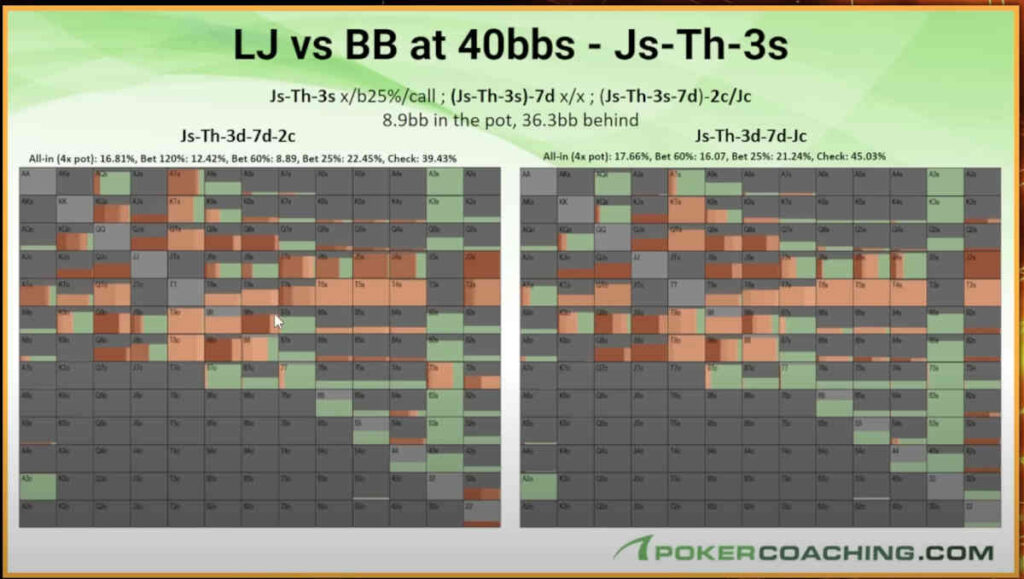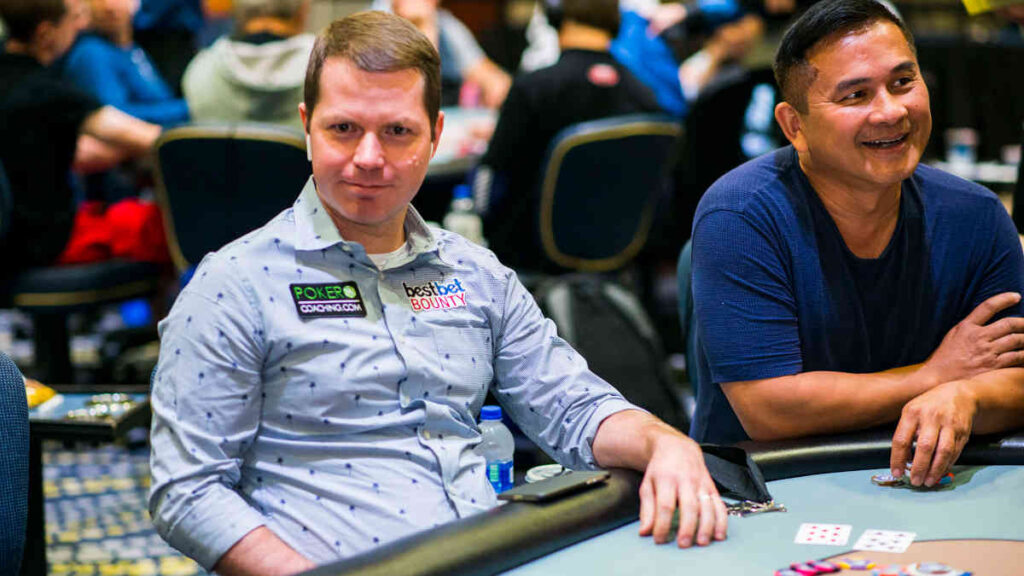If you followed the recently concluded World Series of Poker or generally enjoy watching live tournaments, you’ve probably noticed that many pros will often leave one big blind behind instead of going all in.
Some time ago, I had a hand like this in a pot against none other than Daniel Negreanu, and it prompted a lot of questions from PokerCoaching.com members and followers as to why Negreanu would do this.
So, in today’s article (and the included video), I shed some light on the practice of leaving one big blind behind, why it makes (a lot) of sense in certain spots, and how you can add this play to your repertoire to boost your ROI.
Reasons for Leaving One Big Blind Behind
As strange as this play may seem at first glance, it is actually good, strong, and fundamentally sound poker that makes a lot of sense in certain spots.
Generally speaking, in tournaments, the chips you stand to lose are more valuable than the ones you stand to win.
To explain this concept, here’s an extreme example. You’re at a final table of a tournament with nine other players. You have 1,000 big blinds, while everybody else is sitting on just 10 big blinds.
You are a huge favorite to win this tournament, and if you win another 10 big blinds (by eliminating another player, for example), your equity barely changes at all. Whether you have 1,000 or 1,010 big blinds, your chances of winning are pretty much the same.
On the other hand, for your opponents, those ten big blind stacks are extremely valuable. One of them will take second place, one will finish third, etc.
So, this concept of chips you stand to lose being more valuable becomes increasingly more important as your stack gets shorter. While you’ll almost never face our hypothetical scenario, you will often find yourself in a spot where there are other short stacks, and you’ll make money by simply outlasting them.
When there is a payout jump approaching, you really don’t want to go broke, especially if there are short stacks waiting to bust (or even big stacks battling it out).
The practice of leaving one big blind behind ties into this concept, and while it can be used before the flop, it is especially effective on the river, where you can have a perfectly polarized range.
Keeping One Blind Behind Preflop
When there are payout jumps looming in a tournament, especially with multiple tables still running, it makes sense to go for a raise that leaves you with one big blind instead of just going all in.
What you hope to achieve is to either get your raise through and steal the blinds and antes, or get called and then (hopefully) check it down.
In this scenario, if you win the pot, presuming you started with 10 big blinds, you go up to 19 or 20 big blinds. If you lose, you’re left with one big blind instead of being out of the tournament.
The difference between having 20 or 21 big blinds in your stack is minimal. On the other hand, the difference between having that one big blind and being out is a certain monetary amount, which can be quite significant, depending on the stage of the tournament, payout structure, etc.
It is important to note here that if your opponent decides to put you all-in before the flop or on the flop, you pretty much have to call. You can’t really be folding, getting 20 to 1 pot odds. So, your plan to keep one blind behind won’t work every time, but it will work often enough.
This strategy will help you secure an additional buy-in or two (or more), and, every now and again, you might end up spinning that single blind into an actual stack and perhaps even winning the tournament.
Postflop Principles of One Big Blind Behind
As mentioned, the concept of leaving one big blind behind applies even more to postflop scenarios. Quite often, in a hand that you play aggressively, you’ll arrive to the river where the correct play is to fire a big bet with a polarized range.
Many players will just go all in, but instead of doing that, you can bet all your chips except for that one blind that you leave behind.
It is really important, though, that all your bluffs in this spot are hands that lose 100% of the time. You don’t want to be in a spot where you can get re-bluffed and end up folding a winner for just one extra blind.
Let’s look at an example where the lojack raises and we call in the big blind, playing 40 blinds effective. The flop comes J♠10♥3♠.
We check the flop, they bet a quarter of the pot, and we call. The turn is the 7♦ and the action checks through.
We get to the river with 8.9 big blinds in the pot and just over 36 big blinds in our stack. This isn’t a spot where many players use all-in sizing, but the GTO strategy actually suggests betting all-in quite often.

So, if we look at the 2♣ river, which is a complete brick, we should be using huge bets with 16% of our range. We have a lot of 9-8 hands in this spot, which is the absolute nuts, and then some queen-highs that block 9-8 (Q-9, Q-8).
In this situation, when using a big overbet, you definitely want to leave one big blind behind if there are payout implications.
The concept also applies to a different type of river, such as J♣. Here, we are betting huge with all of our hands containing a jack and then a variety of busted flush draws that have no showdown value.
Pay Attention to Other Stack Sizes
One final piece of advice when it comes to leaving that one big blind behind is to be aware of other stack sizes. This is of particular importance in final table situations.
If there are other relatively short stacks around, the value of keeping that blind increases significantly. When there are other players with ten big blinds or fewer, you are one or two lucky hands away from catching up, and there is always a possibility of one of them busting before you have to be all in.
If everybody is on a healthy stack, the value of keeping one big blind decreases. The play can still make sense, but it won’t give you nearly as much leverage as in the scenarios with other short stacks around.
The bottom line is, this is a play that you want to have in your strategy. As long as you stay perfectly polarized, there are quite a few upsides to it, and very few, if any, downsides.


